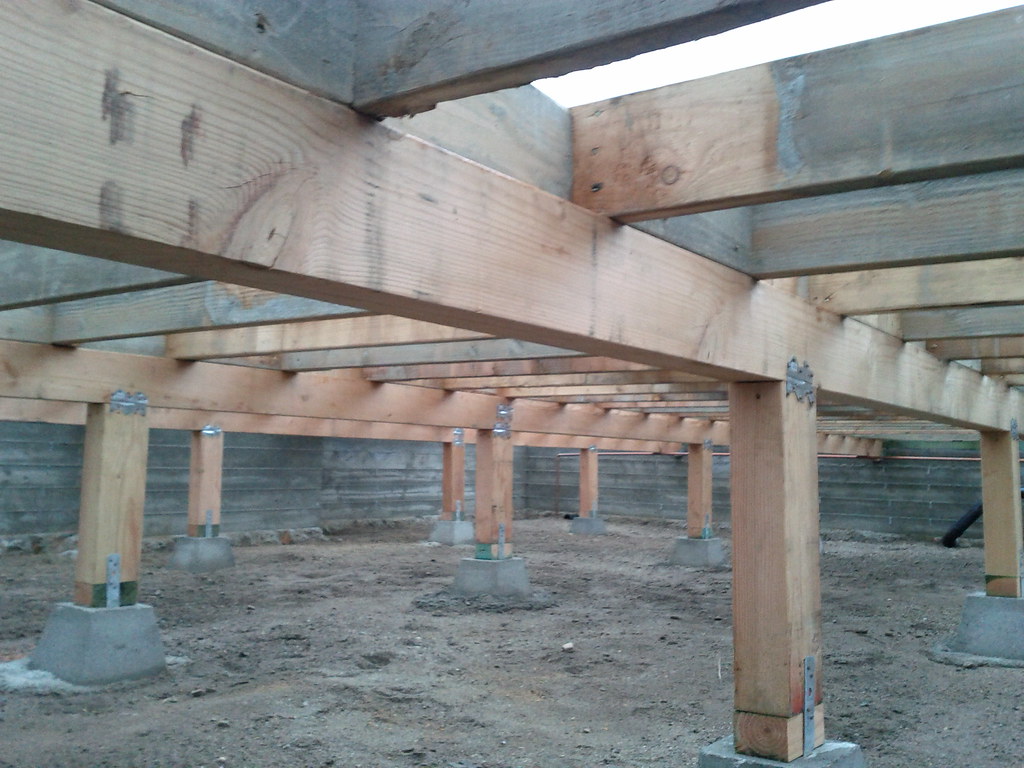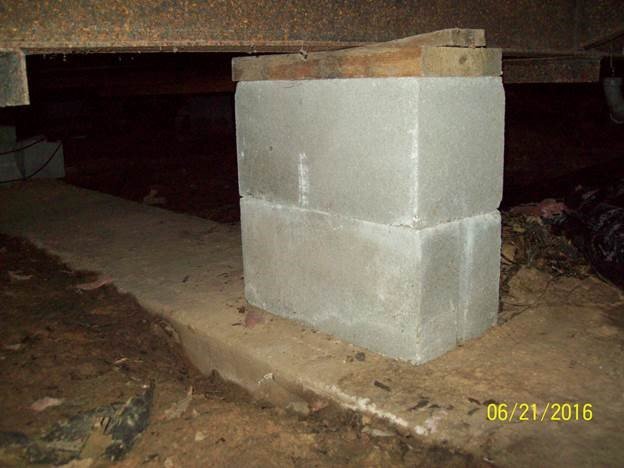Table of Content
Piers are typically installed in key structural areas, such as beneath load-bearing walls, at corners, and along exterior walls of a building. The pier footings must be at least 8 inches thick in order for them to be secure. The height is determined by a measurement from the top of the footer to the top of the last concrete block, with a maximum of 48 inches. Piers are cement cylinders that are 42 inches deep beneath the frost line and are used to hold buildings in place. Each pier measures 30 inches in diameter, and they are 8 feet apart from one another. Piers provide a strong foundation for your manufactured home, allowing it to be held down while also protecting it from the elements.

The roof on one end is 3 to 4 inches longer on the front half than the back. A manufactured home should be re-leveled at regular intervals. Homes with complicated foundations or that are high off the ground should be checked annually for the first few years to ensure that settling or shifting hasn’t occurred. The size of the foundation is determined by the soil bearing capacity and the size of the pad. Each state will have a minimum foundation pad size and will state what material the pad can be constructed with. For instance, Florida’s smallest pad size is 16”x16” and can be made of concrete or plastic; wood is unacceptable.
Learn about Manufactured Home Installation and Setup
The slab foundation for a mobile home is made up of a 4 to 6 inch-deep concrete foundation and 4 to 6 inches of gravel or sand beneath it. Pier and beam foundations, which rely on anchors to hold the structure down and protect it from wind forces, have a much longer life span and are more stable. The Federal Housing Administration establishes and maintains guidelines and standards for mobile home certification. Regardless of the type of foundation you choose, it is critical to follow these guidelines closely when installing a mobile home foundation. Because foundations that are not permanent are almost impossible to construct, financing for a home is almost always out of the question.
Flooding is not an issue because the pier foundation is also lower than the floodplain level. A single-story building should have a pier separation of no more than 8 feet and a two-story structure should have a pier separation of no more than 6 feet. A monolithic wing wall should be supported after every eight feet after it reaches 3 feet in height. Piers should be at least 16 inches wide and 8 feet tall. A professional will be able to advise you on how to install the pier foundation on your new home.
Mobile home blocking requirements
Under piers, wood footings must be at least 89 mm thick (3.5 inches) and subjected to pressure and tension. All plumbing and wiring used to connect utilities to the house’s walls and floors must be housed within the slab foundation. The HUD specifies that a manufactured home foundation must include attachment points for anchoring and leveling the home. Ties-down installation can typically cost up to $2000 on a mobile home. In the United States, a permanent foundation for your mobile home can cost anywhere between $3,500 and $200,000.

Many homeowners forget that compliance isn’t necessarily permanent. The codes and standards can change, so you need to keep an eye out for any changes to the regulations. Now you know that there are standards set out by the HUD that all mobile homeowners need to follow. But remember that the manufacturers of your home will also probably give guidelines for your specific build. Remember that even if you hire a contractor, the responsibility mainly lies with the owner.
- 12" Metal Pier
On average, it costs between $3,500 and $200,000 to build a permanent foundation for your mobile home. Piers and ground anchor systems are the most common foundation type for mobile homes. The FHA only approves mortgages for homes with permanent foundations for single-wide mobile homes, which are manufactured homes. Pier-and-beam foundations, in addition to being cost-effective, provide flood protection, flexibility, and aesthetics. Because the house is elevated above the ground and is anchored on top of posts, it will not flood. Piers must be located under each of the home’s main beams.

Your land will need to be analyzed for grade and your soil will need to be tested so they can determine the proper foundation to keep your home safe and healthy. Tenants have little to no recourse and with a land/home package, it’s double the nightmare. You are doing everything you are supposed to be doing – mostly writing letters and keeping extensive records of everything. Home buyers are often put in an awkward situation when it comes to installing their homes.
I would be interested as to what constitutes a ” poor installation”. They will be able to tell you faster than any Google search. If your county doesn’t have an informative website you likely won’t find the most updated information.

I think 32 states have their own HUD state agency that you can contact directly for complaints and issues when it comes to manufactured homes . The other state requires you deal with the HUD office in DC. You will also want to contact your state’s manufactured homeowner’s association. Ground Anchor– any device approved by the DMV that is used to secure a manufactured home to the ground to resist wind forces.
It’s a mound that you put the home on but it has to be level and the soil/ground has to be tested to make sure it won’t sink too much. If your lot is too wet to start because it is holding water or moisture it needs to be graded better so that the water runs away from the home’s footprint. If it’s graded properly it wouldn’t have a chance to sit there and create such an installation issue. In conclusion, manufactured home installation and setup is one of the most important issues you face as an owner. Clearance, pier height, single vs double stacked blocks, shims, and many more guidelines must be followed. The homeowner should research to know the specific rules for the home type and the location.
At some point this home had sat vacant for a number of years and was sold at auction due to property taxes not being paid. There was also a freeze-up during that time and all the water supply lines were replaced. We are looking to buy a home this summer and measuring the pros/cons of manufactured homes. I can’t seem to find a lot of positive reviews on homes and dealerships available in my area. You are experiencing one of the most common issues in the manufactured housing world – issues due to improper installation and a lack of tie-downs. 80 foot long homes are awesome but they have a couple of disadvantages such as heating/cooling.
They keep your house out of reach of floods, frosts and shifting soil. The structure is usually secured to the bottom of your mobile by steel traps to make sure that it doesn’t move. Planning department should be able to provide you with the current codes.
HUD recommends that there be a 6″ slope for the first 10′ around the home. A little dozer work and a french drain or two can remedy just about any kind of water or moisture issues on a site. I’ve seen manufactured homes installed in near swamps in SC but with the right grading and preparation, it was turned into a fine lot. You can read more about manufactured home site prep here. Every new manufactured home has a 1-year warranty but that only covers the building of the home. There are no national regulations or laws mandating the installation of the home even though that’s where the majority of issues stem from.
A slab foundation can last a long time, but it is more expensive than a frame-on-grade foundation. Choosing a reputable builder when building a slab foundation is critical due to the fact that foundations are extremely expensive to repair or replace. The foundation of a manufactured home should be chosen carefully. For all your foundation-related needs in the Atlanta area, turn to the geotechnical experts at Engineered Solutions of Georgia. We back all of our services with a comprehensive triple warranty so when you partner with us for foundation repair services, you can rest easy knowing your investment is protected.
I will contact the agency in Texas if they choose to do neither and possibly retain legal representation for my daughter if necessary. During setup jacking the front half to the back something happened and there was a Big Bang and I saw that half roll like on a wave. When they finished putting it together there is a gap between the marriage wall from 1 1/2 inch at one end to 2 1/2 inches at the other end.


No comments:
Post a Comment